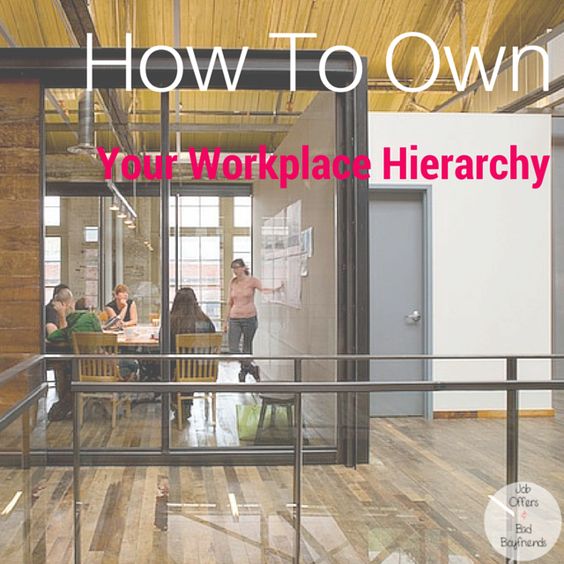Hierarchy in the Workplace – ways to tackle proper Hierarchy in the workplace.
“If you are lucky enough to be someone’s employer, then you have a moral obligation to make sure people do look forward to coming to work in the morning.”
John Mackey

Hierarchy in the Workplace is a common way to organise a business. Any organisation that has more than a few employees, and that is developing quite fast should consider forming a hierarchical structure for its business.
This organisational structure tends to resemble pyramids, in which your business has vertical levels leading to a top authority figure (CEO or Managing director) along with managers to administer benevolently and employees allocated to defined clear roles. Each stage of the chain has one person managing several workers directly under them, within their span of control.

But, sometimes members of upper management don’t usually have extra time to interact with colleagues, especially if they don’t run into them at the office. It can stifle the employee experience and leave workers with a lack of control, motivation, and desire to excel. It leads them moving towards organizations where employees feel valued and have the tools they need to reach their potential.
If you are also an employer going through the same situation of losing employees, it’s the right time to bring a shift in your organisational structure. Here are a few essential pieces of advice to help you tackle a proper hierarchy in the workplace.
“When the world changes around you and when it CHANGES AGAINST YOU – What used to be a tailwind is now a headwind – You have to LEAN INTO THAT and figure out what to do because COMPLAINING ISN’T A STRATEGY.”
Jeff Bezos
―
How to tackle a proper hierarchy in the workplace
- Treat everyone equally
In a lousy hierarchy, people at the upper side of the power structure get treated with more esteem as individuals than folks at the bottom. It should strictly get avoided. So, the first step towards tackling a functional workplace hierarchy is to have mutual respect in the organisation, regardless of status and authority.
Communicate clearly and consistently with all your workers about big things that are happening in the company. When you don’t let your people know about important events that affect them, it feels deeply disrespectful as though they are simply mindless cogs in the machine and not worth keeping in the loop.
- Redefine roles and responsibilities
Ensure every staff has a clear set of objectives and explain to them what you expect from them. Also, allow employees to show their abilities and give them their own desired autonomy level and the power of making decisions within the framework of their job role.
- Give junior team members the floor
Never let your employees feel like they are side-lined from responsibilities that are set aside for more senior employees or not invited to internal meetings. It makes them feel like their opinion isn’t valued. It is mainly a concern for employees in the early stages of their career and could impact them speaking up in future.
Also remember one thing about hierarchy is that if a problem arises in one department of the organisation, the negative feelings can creep into other areas. That negativity can even spread among employees. So, you need to involve your junior employees in discussions and let them know about the new changes happening in the company.
“No matter how brilliant your mind or strategy, if you are playing a solo game, you will always lose out to a team.”
Reid Hoffman
- Communicate about company goals
When the top management develops departmental goals for the rest of the company without consulting with the managers of those departments, the firm runs the risk of not making its goals. For an organisational structure to be effective, making goals needs to be a two-way process. When top management does not seek the input of the employees in the various level of the company to create company goals, then resentment can set in, and morale begins to drop.
- Bring a change in the office structure
One of the biggest things that can impact a workplace culture is how close the workforce is. It is always better to design the office space alongside the rest of the workforce so that the people of higher seniority are amalgamated with the junior teams to encourage conversation and rapport.
Having the CEO and directors sitting together and collaborate with the employees can have a massive impact on morale. It can not only improve staff happiness but also reflect on retention levels and business performance.
An excellent hierarchical organisational structure involves communication, innovation, and collaboration. It not only fosters personal development but also enhances skills and competency level among employees. There must be a lot of strategies in place to deal with the potential negatives which like to occur under this structure. If you make no effort to deal with the negativity, then a company becomes more likely to fail because its people are soloed into their specific roles, afraid of what may happen if they try to move forward.

“Hierarchy in workplace is only for classification not for dominating the workers lower to your position.”
Darani Vasudevan





